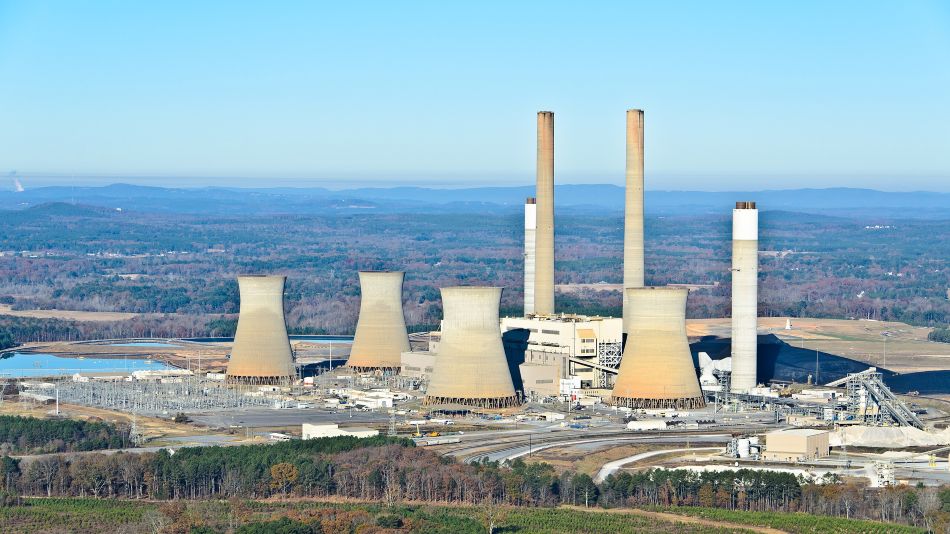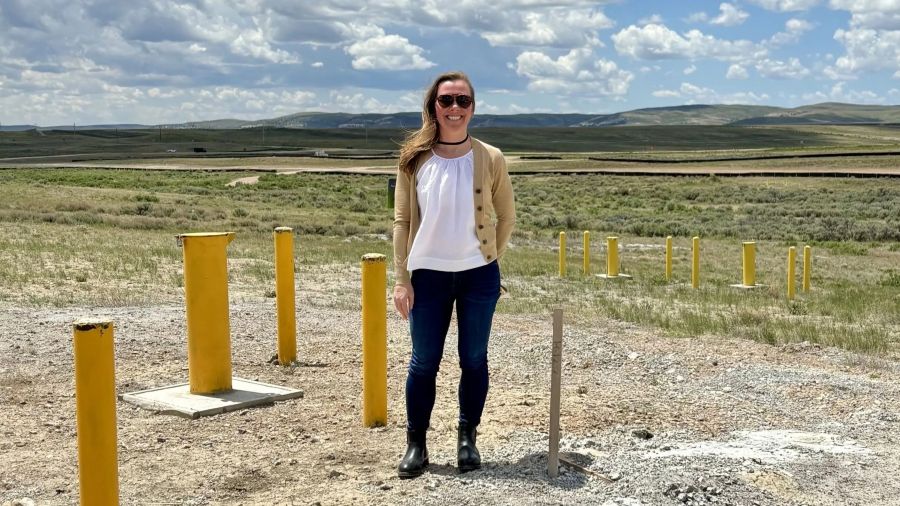The Fight to Decarbonize Needs Solar Workers
The Fight to Decarbonize Needs Solar Workers


An obstacle in the fight to decarbonize with a solar energy solution is the need for workers. Cornell University researchers look at the solar workforce, job quality, and industry racial disparities.
A notable difficulty in the fight to decarbonize the world using solar energy is the growing demand for skilled and experienced photovoltaic workers. Under a high-electricity demand scenario, it is projected that the U.S. will need 1,118 gigawatts (GW) of solar energy by 2050, concluded the authors of “Exploring the Conditions of the New York Solar Workforce.” And despite increasing its solar installation by over 2,000 percent in the past decade, “by the end of 2023, only 5.56 GW of solar capacity had been installed in the state,” the report by the Climate Jobs Institute (CJI) concluded.
New York State (NYS) will need 60 GW by 2050, making solar installations in the state critical, said Avalon Hoek Spaans, CJI’s assistant director of research at Cornell University’s ILR School, who concluded that “climate solutions, especially renewable installations like solar are not happening at the scale and pace science demands.” Further problematic is that the jobs that are created are “low-quality, low-wage work,” Spaans added.
According to the latest information for the U.S. Bureau of Labor Statistics, the mean hourly wage for solar photovoltaic installers, for example, is $25.55, with a mean annual wage of $53,140. This is below the U.S. average wage of $65,470.
“We need to figure out mechanisms to rapidly scale this work but do so while ensuring these are high-quality, family-sustaining jobs that are accessible to frontline communities,” Spaans explained. “We can utilize the build out of these solutions to decrease climate risks to the most vulnerable communities in our country by creating employment with things like benefits, retirement, and paid time off.”
Learn More: Infographic: Utility-Scale Solar Avoids SRE
The April 2024 report examined the solar workforce in NYS. It found that job estimates based on industry data may be inaccurate. Specifically, it found that NYS workers do not all live in the state, instead work in multiple states, and often move to where the jobs are. “Throughout the state, projects are being installed and maintained by large national companies,” the report noted. They also found that the workers sampled were almost exclusively non-union, and those who worked full-time and were directly employed by solar companies often did not receive benefits.
Finally, over 30 percent of those sampled reported they were paid per panel installed. And what further complicates productivity in the industry is the work itself, which is filled with occupational hazards. “The current pay ranges and travel requirements already limit recruitment options,” explained Jillian Morley, research support specialist. “So as we begin to see more people have to drop out of the industry because of the normal strain this kind of work can put on the body, it’s possible that the number of workers simply won’t be enough to build out adequate solar infrastructure.”
The researchers partner with the Climate Jobs National Resource Center and work closely with labor unions across the country as well as various government agencies. Morley sees wages as one area that is a challenge but one that can be met.
“There are challenges around benefits and workplace hazards that will be more complicated to address, but paying solar workers a fair, fixed wage is a straightforward solution that solves several issues,” she explained. “Fair, fixed wages will attract more workers, enable people to pay for their own benefits, and reduce adverse incentives related to piece rate pay. What is needed is a “sectoral minimum wage for solar work,” Spaans concluded.
Discover the benefits of ASME membership
At this point in time, the researchers view their greatest challenge as the industry information needed to make state policy decisions. "Right now, the majority of what we know about the industry comes directly from employers,” Spaans explained. “However, through our study, we found many workers work across multiple employers. We need more investment in research that centers worker voice to truly understand what is happening in this rapidly changing industry.”
The information the researchers did find uncovered racial disparities. White workers, who may have been under sampled in the study, were still “more likely to report longer tenure with their employers” and paid an annual salary nearly twice the median rate of their Black and Hispanic counterparts. And Black workers were more likely to report receiving cash payments compared to other workers, as well as more likely to have experienced wage theft while working on a state solar project.
Gathering information is “necessary to address problems like racial disparities, occupational hazards, and lack of access to benefits,” Spaans said. Morley agreed and added, “Multi-employer work and worker transience in the industry—this presents serious obstacles around benefits administration.”
Cathy Cecere is membership content program manager.
New York State (NYS) will need 60 GW by 2050, making solar installations in the state critical, said Avalon Hoek Spaans, CJI’s assistant director of research at Cornell University’s ILR School, who concluded that “climate solutions, especially renewable installations like solar are not happening at the scale and pace science demands.” Further problematic is that the jobs that are created are “low-quality, low-wage work,” Spaans added.
According to the latest information for the U.S. Bureau of Labor Statistics, the mean hourly wage for solar photovoltaic installers, for example, is $25.55, with a mean annual wage of $53,140. This is below the U.S. average wage of $65,470.
“We need to figure out mechanisms to rapidly scale this work but do so while ensuring these are high-quality, family-sustaining jobs that are accessible to frontline communities,” Spaans explained. “We can utilize the build out of these solutions to decrease climate risks to the most vulnerable communities in our country by creating employment with things like benefits, retirement, and paid time off.”
Learn More: Infographic: Utility-Scale Solar Avoids SRE
The April 2024 report examined the solar workforce in NYS. It found that job estimates based on industry data may be inaccurate. Specifically, it found that NYS workers do not all live in the state, instead work in multiple states, and often move to where the jobs are. “Throughout the state, projects are being installed and maintained by large national companies,” the report noted. They also found that the workers sampled were almost exclusively non-union, and those who worked full-time and were directly employed by solar companies often did not receive benefits.
Finally, over 30 percent of those sampled reported they were paid per panel installed. And what further complicates productivity in the industry is the work itself, which is filled with occupational hazards. “The current pay ranges and travel requirements already limit recruitment options,” explained Jillian Morley, research support specialist. “So as we begin to see more people have to drop out of the industry because of the normal strain this kind of work can put on the body, it’s possible that the number of workers simply won’t be enough to build out adequate solar infrastructure.”
The researchers partner with the Climate Jobs National Resource Center and work closely with labor unions across the country as well as various government agencies. Morley sees wages as one area that is a challenge but one that can be met.
“There are challenges around benefits and workplace hazards that will be more complicated to address, but paying solar workers a fair, fixed wage is a straightforward solution that solves several issues,” she explained. “Fair, fixed wages will attract more workers, enable people to pay for their own benefits, and reduce adverse incentives related to piece rate pay. What is needed is a “sectoral minimum wage for solar work,” Spaans concluded.
Discover the benefits of ASME membership
At this point in time, the researchers view their greatest challenge as the industry information needed to make state policy decisions. "Right now, the majority of what we know about the industry comes directly from employers,” Spaans explained. “However, through our study, we found many workers work across multiple employers. We need more investment in research that centers worker voice to truly understand what is happening in this rapidly changing industry.”
The information the researchers did find uncovered racial disparities. White workers, who may have been under sampled in the study, were still “more likely to report longer tenure with their employers” and paid an annual salary nearly twice the median rate of their Black and Hispanic counterparts. And Black workers were more likely to report receiving cash payments compared to other workers, as well as more likely to have experienced wage theft while working on a state solar project.
Gathering information is “necessary to address problems like racial disparities, occupational hazards, and lack of access to benefits,” Spaans said. Morley agreed and added, “Multi-employer work and worker transience in the industry—this presents serious obstacles around benefits administration.”
Cathy Cecere is membership content program manager.







